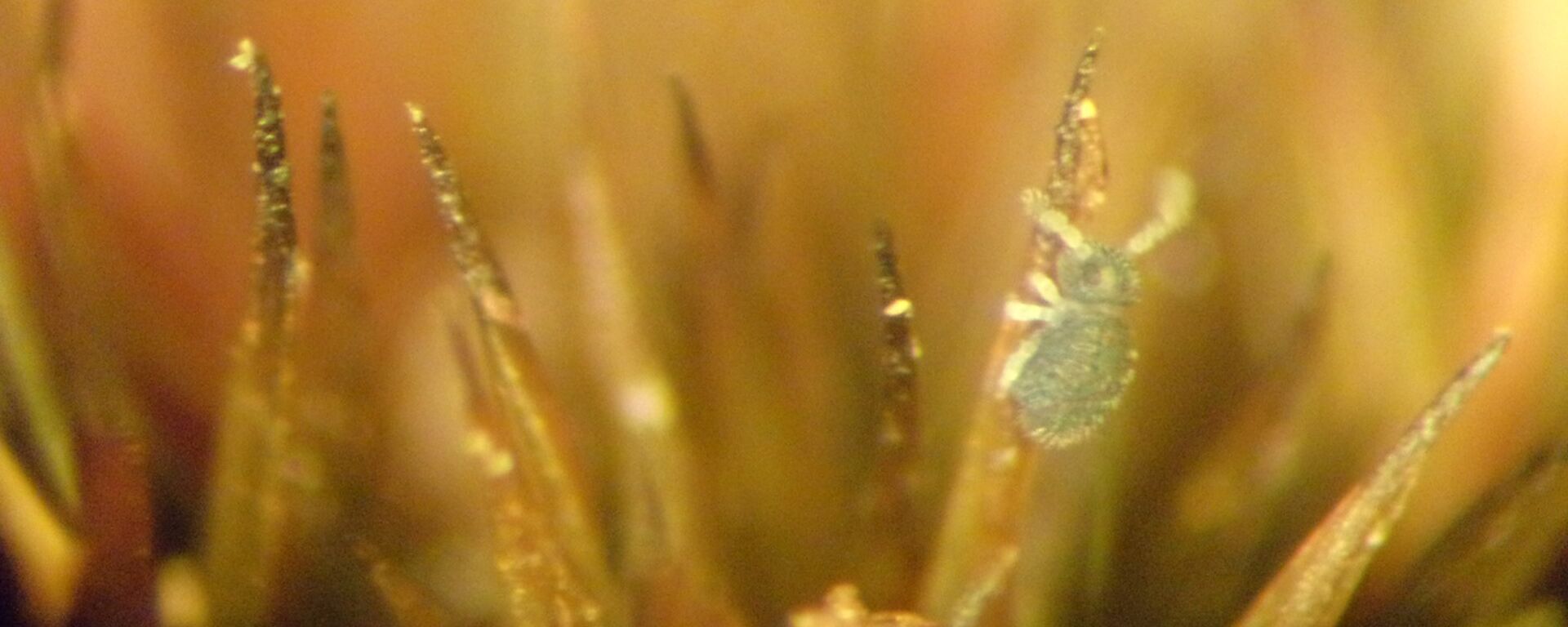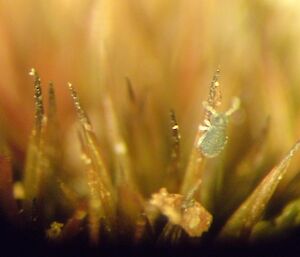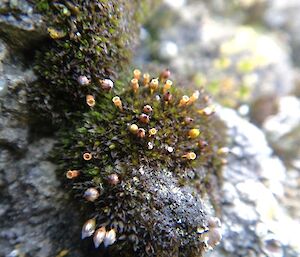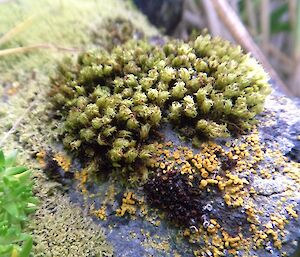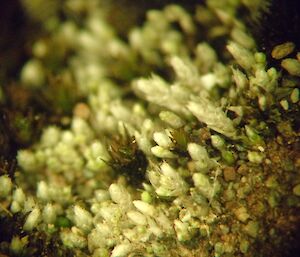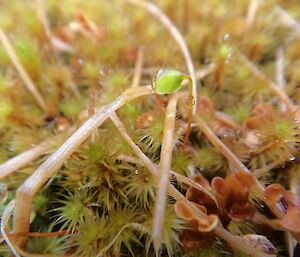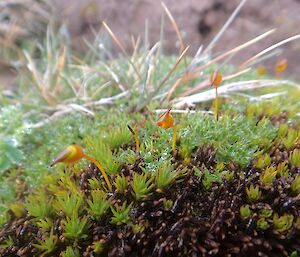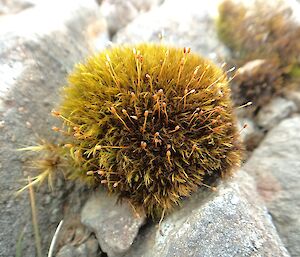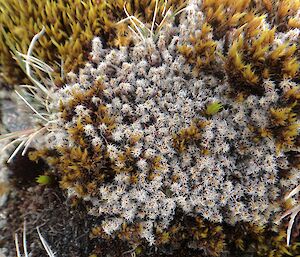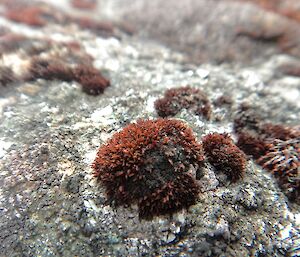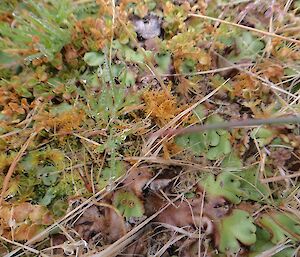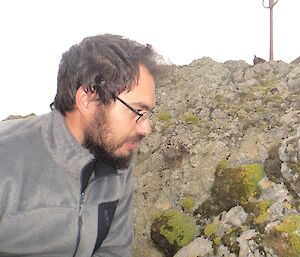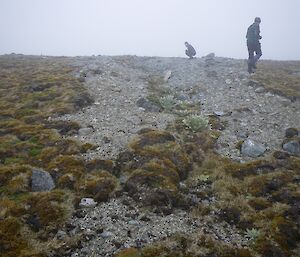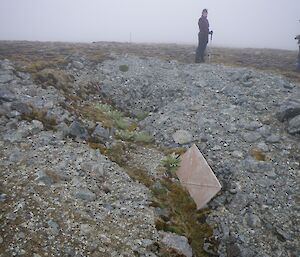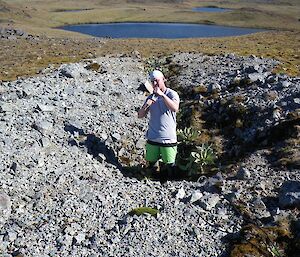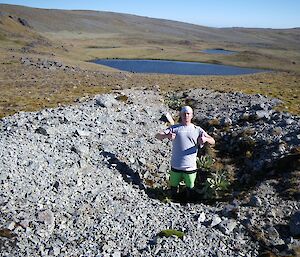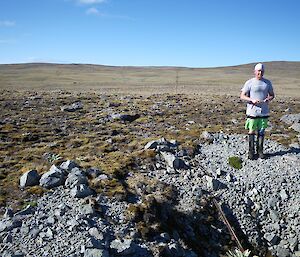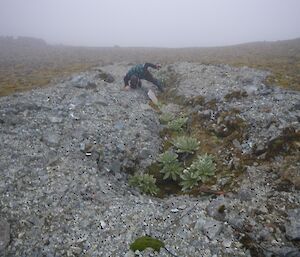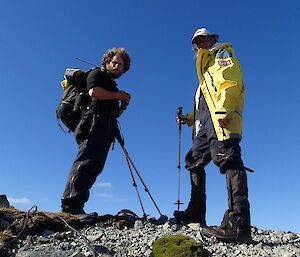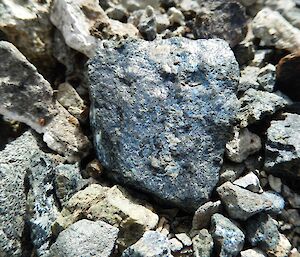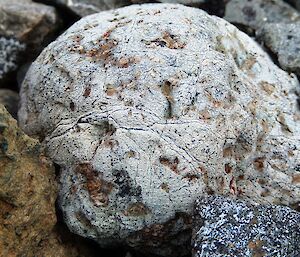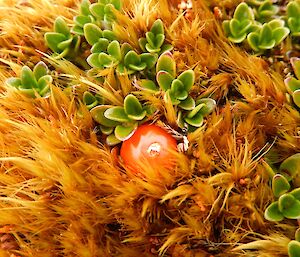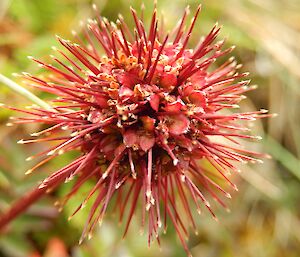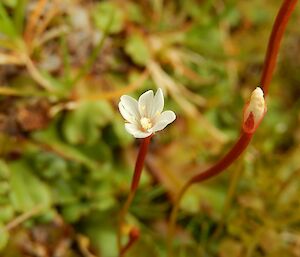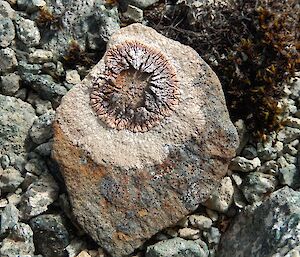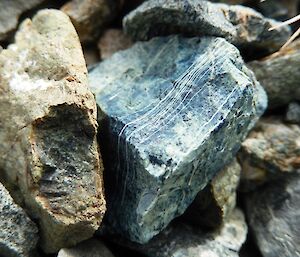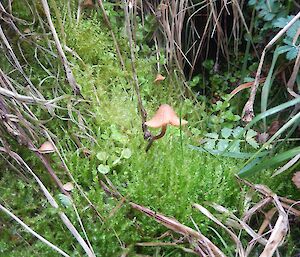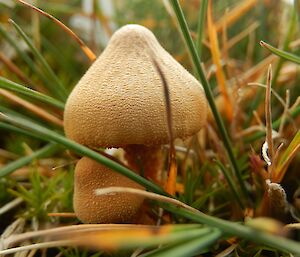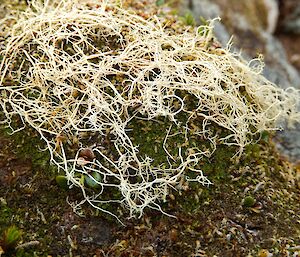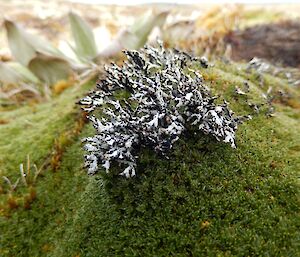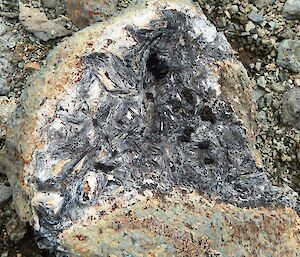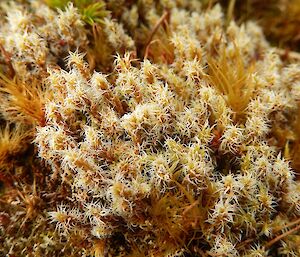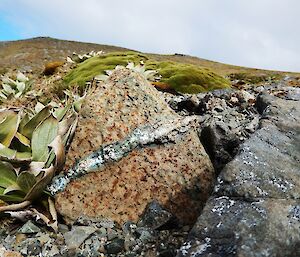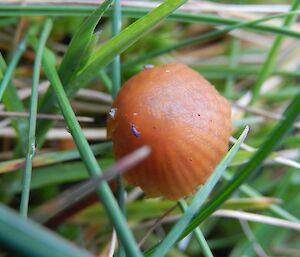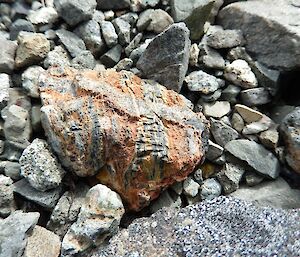I am currently on Macquarie Island as part of the Poa annua alien plant project. While I have been here on the island I have had the opportunity to observe the local mosses.
I have worked on mosses in the Antarctic Peninsula and find the Macquarie Island ones really interesting. There are so many and they are really quite cool! On Macca there are 84 species! This is double the number of vascular plants on the island. Most people don’t know that mosses are an important of part of Macca ecosystem; for example they make up a lot of the terrestrial biomass and store water for other organisms.
The photographs below this article are referenced.
They house all kinds of tiny critters such as springtails and mites (photo F1). The mosses are usually tiny and that makes them harder to spot. Often you have to kneel down in order to see them closely, which is not desirable when walking around with a full backpack all the time.
I thought I would describe some of the most common ones.The black ones that are abundant on coastal rocks are called Muelleriella crassifolia, (photo F2). Ulota phyllanta seems to like to grow on wood, so can be easily spotted on the old buildings around station (photo F3). Bryum argenteum literally translates to silver moss, a fairly apt name (photo F4).
In wet areas on slopes Breutelias are the most common (photo F5). Polytrichaceas are either like tiny palm trees or junipers growing in mineral soils (photo F6). In the plateau we all see big guys growing in “polsters” (pillows), usually being Ditrichum striatum (photo F7).
But probably the most common moss on the plateau is Racomitrium crispulum often seen with the beautiful cushion plant Azorella macquariensis. Another quite elegant and common moss is Racomitrium pruinosum, covered in fine grey hairs (photo F8). Andreaeas (photo F9) are the black tufted mosses, their presence indicated harsh.
And finally, best not to forget liverworts. Most people see Marchantia bertoana (photo F10) but there are many more, most of which go unnoticed; there are 52 species. I have found a few but most are still waiting to be found. Challenge accepted! Check the moss flora of Macquarie Island by R. Seppelt 2004 which provides more interesting information on these amazing organisms.
Luis R. Pertierra is an ecologist from the Spanish Polar Program and is a guest of the 2013–14 Australian expedition (photo F11). He is participating with the project AAS 4158 that has been reported in a previous Icy News.

